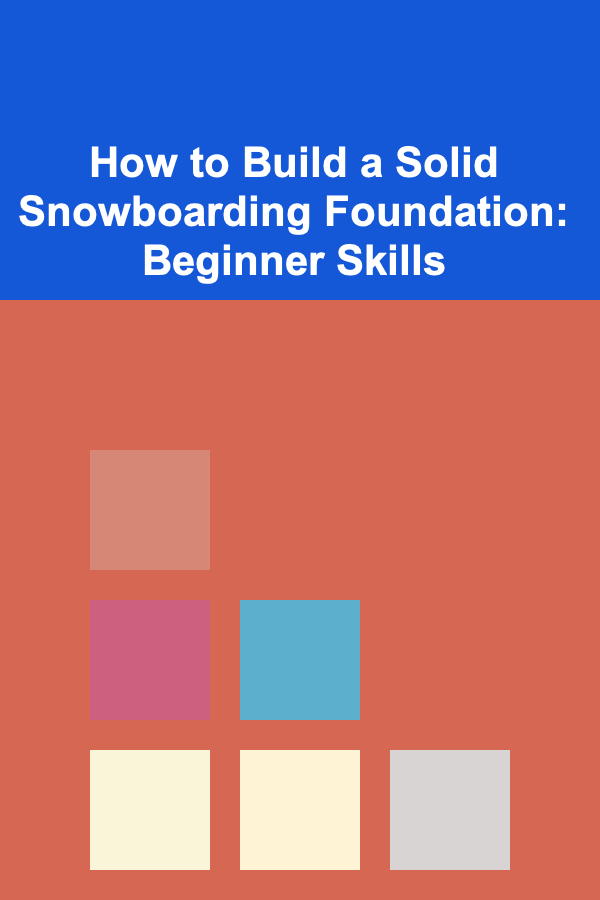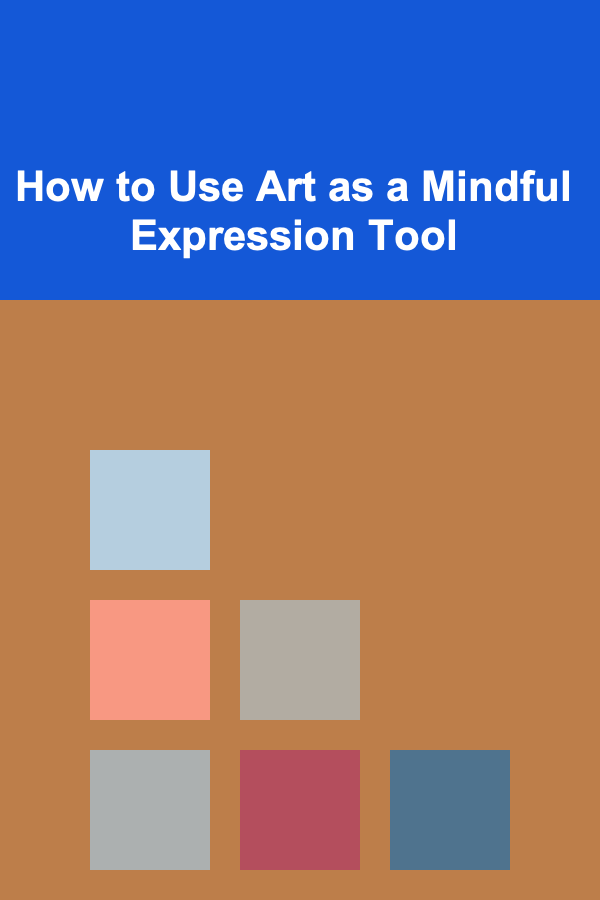
How to Build a Solid Snowboarding Foundation: Beginner Skills
ebook include PDF & Audio bundle (Micro Guide)
$12.99$10.99
Limited Time Offer! Order within the next:

Snowboarding, an exhilarating winter sport, has seen a rise in popularity over the years. Whether you're captivated by the rush of carving down slopes, the thrill of hitting jumps, or simply enjoying the scenery, snowboarding offers an unmatched combination of excitement and freedom. However, like any sport, snowboarding requires practice, patience, and a strong foundation of basic skills to become proficient.
For beginners, it can be easy to get caught up in the thrill of the sport and jump straight into challenging slopes or tricks. But without a solid foundation, those initial experiences may end up being frustrating or even potentially dangerous. Building a strong snowboarding foundation is crucial for safety, confidence, and long-term success on the slopes. In this guide, we'll explore the essential beginner skills every snowboarder should develop to ensure a smooth and enjoyable ride.
Understanding Snowboarding Fundamentals
Before diving into specific skills, it's important to understand the key principles that underlie snowboarding. Snowboarding is primarily about balance, control, and movement. Unlike skiing, where your legs move independently, snowboarding involves both feet strapped to a single board, creating unique challenges and opportunities for balance and coordination.
There are three fundamental aspects to snowboarding:
- Stance -- Your stance will determine the way you ride, whether you're regular (left foot forward) or goofy (right foot forward). It's essential to identify your natural stance early on, as it affects how you position yourself on the board and control your movements.
- Edge Control -- Snowboards have two edges: the toe edge (on the front of the board) and the heel edge (on the back of the board). Edge control is crucial for turning, stopping, and maintaining balance.
- Balance -- A strong sense of balance will enable you to maintain stability on the board, adjust your posture, and react to changes in the terrain.
Let's break down the essential beginner skills to help build this foundation.
1. Finding Your Stance
The first step to becoming a confident snowboarder is to figure out your natural stance. Most snowboarders ride either in a regular or goofy stance, depending on which foot is naturally forward.
- Regular Stance: Left foot forward (left leg leads).
- Goofy Stance: Right foot forward (right leg leads).
To determine your stance, you can try a few different methods:
- The Slide Test: Stand on a smooth, slippery surface (like tile or hardwood floor) and slide forward. The foot that leads is typically your front foot.
- The Kick Test: Imagine kicking a ball. The foot you would kick with is usually your back foot, meaning your non-dominant foot is the lead foot.
While this may feel intuitive to some, getting the stance right is fundamental for balance and ease of movement. Don't hesitate to try both to see what feels most comfortable. Once you know your stance, your snowboard will need to be set up accordingly, with the bindings angled to provide comfort and control.
2. Mastering Balance
Balance is the cornerstone of snowboarding. Without a solid sense of balance, controlling your movements, making turns, and staying on the board will be significantly more difficult.
A. Standing on the Board
Before hitting the slopes, it's a good idea to practice standing on your snowboard while it's on flat ground. Strap into one foot and keep the other foot free. While standing, focus on how your body feels as you shift your weight from your heels to your toes.
- Heel-to-Toe Balance: Practice shifting weight between your toe edge and heel edge while standing on the board. This will help you become familiar with how to balance on the board once you're in motion.
- Knee Flexion: Slightly bending your knees will lower your center of gravity and enhance your balance. This position will give you more control over the board, especially when carving turns.
B. The Art of Falling
Falling is inevitable in snowboarding, especially when you're learning, but how you fall can make a big difference in your safety and ability to get back on the board quickly. Avoid using your hands to break your fall, as this can lead to wrist injuries. Instead, practice falling on your forearms or elbows. Try to stay relaxed and avoid tensing up when you fall---this will reduce the likelihood of injury and make getting back up easier.
3. Getting Comfortable with Sliding
Sliding down the hill is the essence of snowboarding. To build your confidence, start on gentle slopes and gradually increase the difficulty. Here are a few techniques to help with sliding:
A. The Skate Move
When you're first learning to ride, the skate move is essential for moving around on flat ground. After strapping in one foot, use your free foot to push yourself forward, like skating on the board. This technique will help you navigate through the snow and build strength in your legs.
B. Side Slipping
Side slipping is a great way to control speed and practice edge control. To side slip, position your snowboard across the hill, keeping your board perpendicular to the slope. Shift your weight from your heels to your toes to control the direction and speed of the slip. Side slipping is a skill that will help you stop or slow down when needed.
4. Turning and Carving
Once you're comfortable with basic sliding, the next key skill to master is turning. Turning is essential for navigating the slopes and controlling your speed.
A. The Basic Turn
A basic turn on a snowboard involves shifting your weight from one edge to the other while controlling the angle of the board. Start by turning in small, gradual arcs. To initiate a turn, you'll need to shift your weight onto your toe edge or heel edge, depending on the direction of the turn.
- Toe Edge Turn: To turn left (if you're a regular rider), shift your weight to the toe edge of the board. Your toes will push the board in the direction you want to turn.
- Heel Edge Turn: To turn right, shift your weight to the heel edge of the board. This motion will guide the board in the right direction.
B. Carving
Carving refers to making smooth, controlled turns with a clean edge cut into the snow. As you improve, carving will allow you to ride with greater precision and speed. To carve, engage the edge of the board more strongly, leaning into your turns while maintaining a balanced stance.
- Carving on the Toe Edge: To carve on your toe edge, tilt your body forward slightly and focus on pushing the board into the snow with your toes.
- Carving on the Heel Edge: For heel-edge carving, lean back slightly while pressing your heels down into the board to create a smooth, controlled curve.
Carving not only helps with speed control but also improves your overall snowboarding technique. The deeper you carve, the better you'll get at making precise turns and riding in varied terrain.
5. Stopping Safely
Knowing how to stop is crucial for a beginner snowboarder. The easiest way to stop is by using a technique called the falling leaf method, where you slide down the hill in a zigzag pattern, using your edges to control your speed and come to a stop.
To stop, shift your weight onto your heels (if riding regular) or toes (if riding goofy). This will dig the edge of your board into the snow and create friction, slowing you down. Practice stopping gently before trying to stop abruptly, which can cause a fall or loss of control.
6. Confidence and Mental Preparation
Snowboarding, like any sport, requires mental preparation as well as physical skill. As a beginner, it's normal to feel nervous or overwhelmed, but developing confidence is key to improving. Here are some tips for building confidence on the slopes:
- Start Slow: Begin with easier slopes and gradually work your way up to more difficult terrain. Mastering the basics will make more advanced techniques easier.
- Stay Relaxed: Tension can make snowboarding more difficult, so try to stay relaxed and flexible in your movements.
- Take Breaks: Snowboarding can be physically demanding, so take breaks as needed to avoid fatigue. Resting will help maintain focus and reduce the risk of injury.
- Celebrate Small Wins: Every time you improve, no matter how small, celebrate it! Snowboarding takes time to master, and small victories will keep you motivated.
Conclusion
Building a solid foundation in snowboarding takes time, practice, and patience, but it's an incredibly rewarding process. By focusing on mastering your stance, balance, edge control, and turning techniques, you'll be well on your way to becoming a confident snowboarder.
Start with the basics, progress at your own pace, and soon you'll find yourself navigating the slopes with ease, enjoying the beauty of winter sports and the thrill of snowboarding. Always remember, the key to improvement is consistency and maintaining a positive mindset. Keep practicing, and soon you'll be carving your way down the mountains like a pro!
Reading More From Our Other Websites
- [Home Security 101] How to Safeguard Your Home with Smart Sensors and Alarms
- [Home Holiday Decoration 101] How to Achieve a Minimalist and Cozy Look with Scandinavian Holiday Decorations
- [Home Maintenance 101] How to Estimate Foundation Repair Costs: A Comprehensive Guide
- [Gardening 101] Best Plants for Your Indoor Garden: A Complete Guide
- [Home Rental Property 101] How to Maximize Your Investment by Offering Apartments with a Gym Amenity
- [Home Lighting 101] How to Install and Style Track Lighting: A Beginner's Guide to Versatile Home Illumination
- [Survival Kit 101] Top 5 Pre-Built Survival Kits: What You Need to Stay Prepared
- [Home Maintenance 101] How to Replace a Water Heater: A Step-by-Step Guide
- [Organization Tip 101] How to Pack Efficiently for Different Types of Travel
- [Personal Care Tips 101] How to Create the Best Hair Masks for Your Hair Type

How to Maximize Small Closet Space with Smart Storage Solutions
Read More
How to Start Saving for a Vacation While Managing Your Home Budget
Read More
How to Use Art as a Mindful Expression Tool
Read More
How to Utilize Vertical Space in Shared Areas
Read More
How to Care for Your Cleaning Sponges to Prevent Bacteria Growth
Read More
How to Navigate the Ethics of AI Research
Read MoreOther Products

How to Maximize Small Closet Space with Smart Storage Solutions
Read More
How to Start Saving for a Vacation While Managing Your Home Budget
Read More
How to Use Art as a Mindful Expression Tool
Read More
How to Utilize Vertical Space in Shared Areas
Read More
How to Care for Your Cleaning Sponges to Prevent Bacteria Growth
Read More